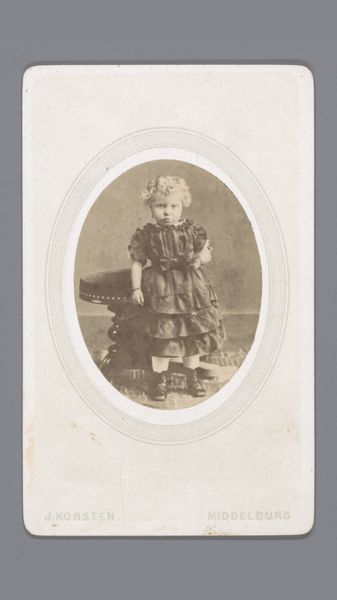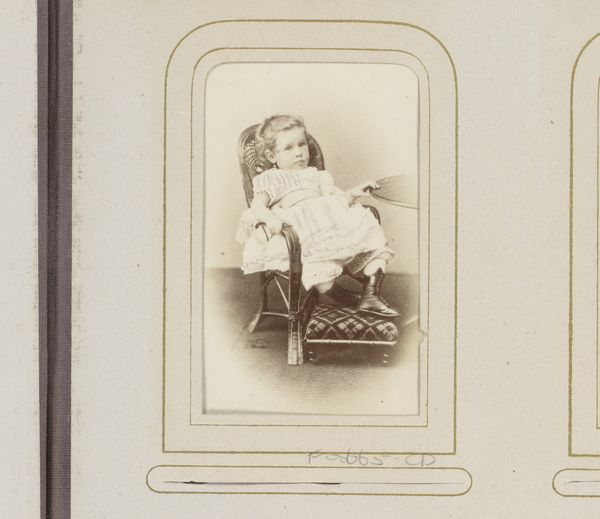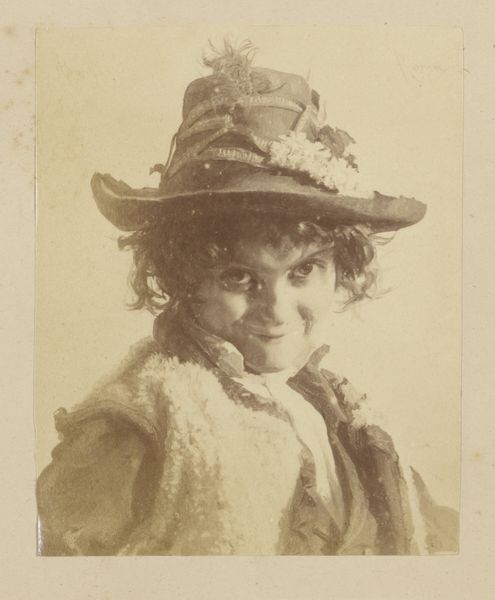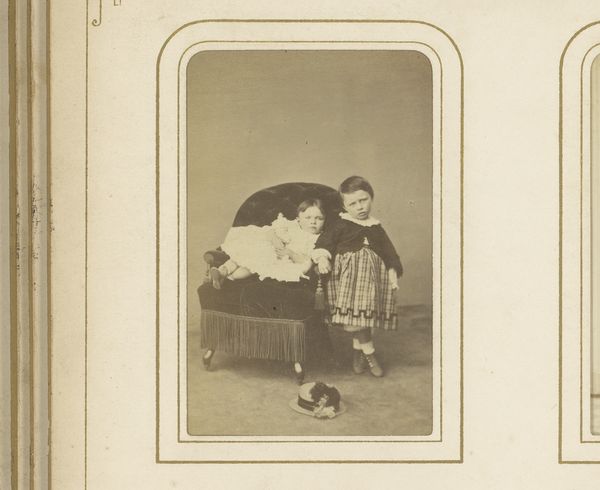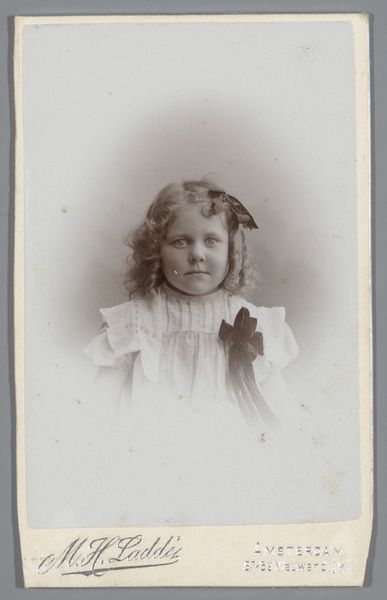
Dimensions: height 133 mm, width 93 mm
Copyright: Rijks Museum: Open Domain
Curator: This gelatin silver print, created in 1886 by E. Vogelsang, is entitled "Portret van een zittend meisje in klederdracht met bal in de hand"—which translates to "Portrait of a seated girl in traditional dress with a ball in her hand." What’s your initial impression? Editor: Nostalgic and slightly melancholic, despite the subject being a young girl. There’s a stillness in her gaze and posture. It's like a frozen moment in time. She’s holding a ball, but seems like she’s waiting instead of about to play. Curator: The style has elements of Romanticism. This reflects the artistic trends of the late 19th century and the interest in the emotional impact of portraits of everyday individuals rather than portraits of powerful men. It romanticized simple village life. It's fascinating how photography contributed to ideas of individual identity. Editor: Right, she’s posed very deliberately. But I also see that playful light catching in her hair! The chair is such a wonderfully ornately carved prop… What statement did photographers intend with these theatrical flourishes? Curator: The chair itself signifies status. The late 19th century was an era of studio photography—a rapidly developing business where a variety of props, backdrops, and costumes would construct staged portraiture for people from many classes, reflecting and shaping social roles and desires. Editor: It's so staged but still strangely touching, no? She is a symbol but a little person. I can practically feel the texture of her lace cap! Her story will always elude us and yet, it makes my imagination run wild! Curator: Agreed. Looking at her attire, the regional clothing emphasizes identity, roots. But it could also reflect an appeal to traditions during a time of fast urbanization and globalization, photography preserving some aspects of old cultures for new consumption. Editor: Maybe that’s why it moves me—the simultaneous reaching for and preserving a sense of place. I wonder if she remembers this day at all? Or the moment of it, frozen and distant and now only half-remembered as it comes back from the past. Curator: That blend of history and emotional resonance certainly makes it a compelling photograph and one of the early successes in a relatively new visual medium at the time. I now notice how that contrasts with modern quick photographs that disappear every day, losing some cultural memory along the way. Editor: Yes, perhaps. Seeing how much went into the images, as the photograph fades, a new emotion seems to enter. That the future is always escaping us.
Comments
No comments
Be the first to comment and join the conversation on the ultimate creative platform.
